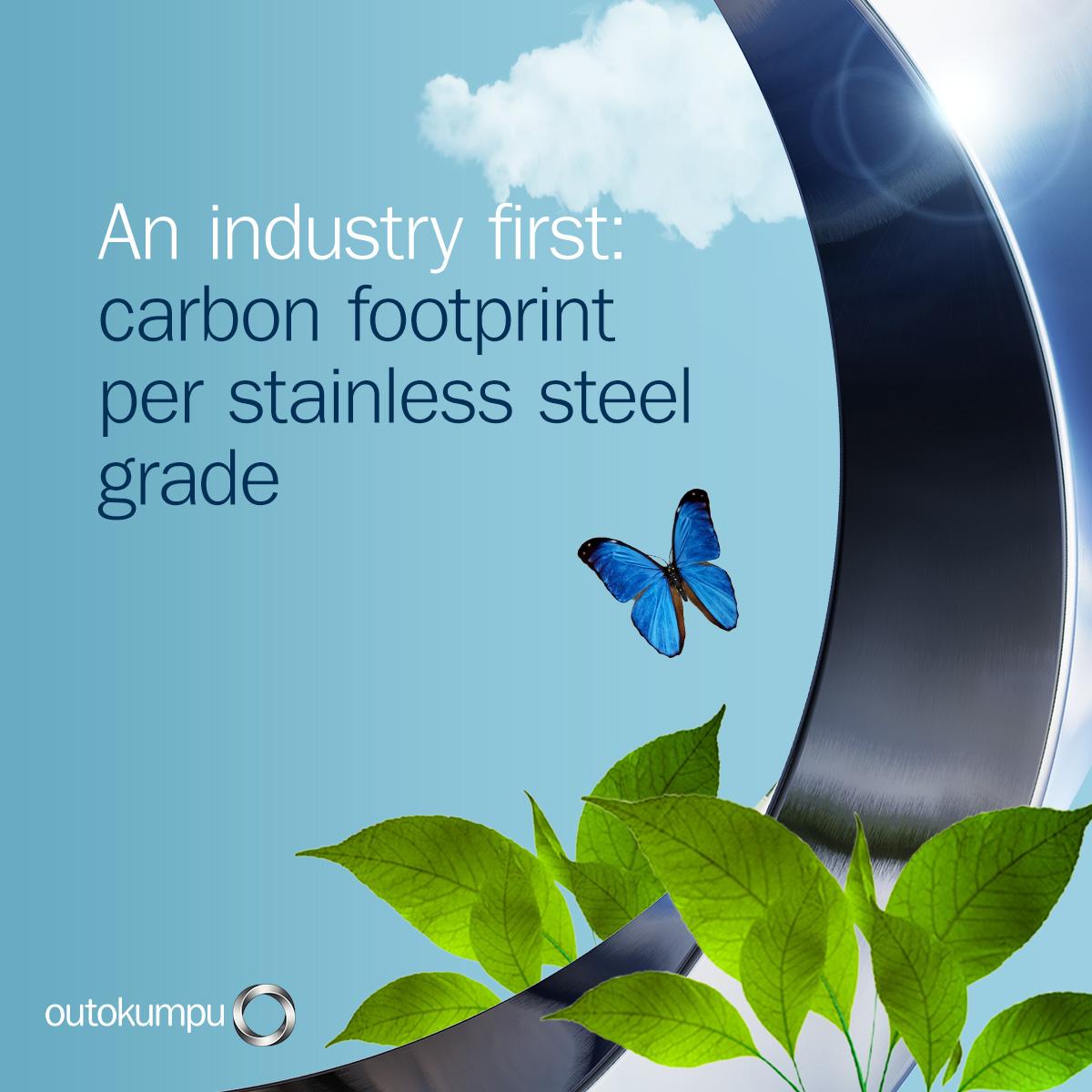Insight
Jörn Teipel, Lead Technical Manager for Architecture at Outokumpu, shares his insight into what architects should consider when working with sustainable stainless steel as a façade material.
A building’s façade is often the first and most lasting impression people have of a building. When specifying a façade, architects need materials to be striking and sustainable. Sustainability goals are also driving a requirement to minimize carbon footprint, provide a long life and that are straightforward to maintain.
Stainless steel meets all these criteria. As a high-performance and high-value material, it is typically used on the most prestigious projects. 
When working with stainless steel, it’s worth understanding how to specify it in three areas. Surface finish offers options to define the aesthetic finish. Meanwhile, choice of grade influences corrosion resistance, and therefore the maintenance frequency, durability and lifetime of a façade. Lastly, mechanical properties are important for ease of fabrication, and ability to withstand wind loading.
Aesthetics, durability and fabrication
Stainless steel’s inherent corrosion resistance means that architects can use it raw and uncoated with a mill finish that lasts decades, giving buildings a timeless quality.
They can choose a textured finish that is embossed to diffuse the light. Alternatively, a polished, brushed or blasted finish defines the level of roughness. These define how the surface reflects light, and how façade elements aesthetically interact with other materials.
Many grades of stainless steel are available and architects should use the ISO 9223 standard to guide their choice. This defines the corrosivity class of the built environment, with a range of classes from C1 (very low corrosivity) to CX (extreme).
Typically, sites in cities such as New York, London, Abu Dhabi, Dubai and Shenzhen in China vary from C3 to C5, depending on the proximity to the shore, the level of pollution and the presence of de-icing salts.
Our most widely-used grade for architectural facades is Supra 316L/4404. It has been used extensively around the world. As well as providing corrosion resistance, it also has good mechanical properties. It is straightforward for fabricators to form and weld into façade components such as panels and fins.
There are also examples of buildings where we have supplied alternative grades with higher quantities of alloying components such as nickel, chromium and molybdenum. In general, there is a suitable grade of stainless steel to provide corrosion resistance in any architectural environment.
An important practicality is that most finishes are available in coil up to 1500 mm side (59.1 inches), which is important to know before defining the size of panels. When the surface finish is further processed, e.g., with a mirror polish or a vibrational polish, Outokumpu can supply the base material in a width up to 2000 mm.
When producing façade components on behalf of architects, fabricators typically order stainless steel in the form of sheet around 1.5 to 2.0 mm thick (0.06 – 0.08 inches) or as little as 0.3 mm (0.012 inches). They may add stiffening components to panels to ensure they will have the mechanical strength to withstand wind loading and mechanical impact.
The influence of quality control
While it may seem distant from a finished building, stainless steel production can have a huge influence on the aesthetics of a façade. This is particularly true for large buildings with extensive flat elements. That is because any variation of color, finish or flatness between panels will catch the eye.
For example, mismatched panels could create a chequerboard appearance that is difficult, costly, and time-consuming to rectify, and that may result in contractual penalties.
To achieve a top quality finish for a large façade, it is worth taking extra care when specifying material. When they are aware of these requirements, experts at our steel mill will take particular care over quality control over large batches. This is challenging as variables in the steel production environment are never fully constant over many production lots. For example, a pattern roll wears while in use and needs to be reworked at regular intervals.
With care, it’s possible for experienced technicians to monitor production to maintain a consistent appearance within tight limits, even across batches of steel that extend to hundreds of tonnes of steel and multiple production lots.
To achieve this, the experts at our cold rolling mill in Dillenburg, Germany set the optimum parameters for rolling, annealing and finishing parameters. And because flatness is as influential as color when it comes to the finished tone, they use a machine called a tension-leveler to stretch and pull coil into consistent flat material.
Sustainability and longevity
Stainless steel also has sustainability benefits. It’s possible to source the material carefully to minimize carbon footprint. Because Outokumpu’s stainless steel is based on more than 90% recycled scrap, we have achieved the lowest carbon footprint in the industry, making us the world leader in sustainable stainless steel production.
On average, Outokumpu produces steel with a carbon footprint of 1.8 kg tonnes CO2 per tonne of crude stainless steel, which is significantly better than the European average of 2.8 tonnes CO2 per tonne. This alone helps architects to cut the footprint of their buildings. We have achieved this by basing our production on electric arc furnaces powered by zero-carbon Nordic energy and because our material includes more than 90% recycled scrap.
However, in November 2022, we went a step further by providing buyers with the specific carbon footprint of the product they’re buying. The benefit for customers is that they can use the data to improve the accuracy of their own emissions calculations.
We are providing this to customers on the delivery certificate that they purchase with their steel. It is based on a rolling average value that we calculate using a methodology that has been verified by engineering consultancy WSP. It takes account of all Scope 1-3 emissions under the ISO 14040 life cycle assessment standard.
Whereas our environmental product declarations include our average carbon footprint, our new product-specific approach provides our customers with accurate data for the very products they purchase. It takes account of the alloying elements in the stainless steel grade, as well as the emissions required to provide the energy used in the production steps, from steel melt to rolling and finishing.
Grade Supra 316L, which is popular for facades, has a relatively low content of alloying elements. Furthermore, the chemical composition can very well be mapped with scrap so that the scrap content in the melt can be set to very high values. As a result, its carbon footprint is lower than our average figure – an important factor to help architects to cut the footprint of their projects.
Looking to the future, Outokumpu is shaping the industry with our new emission-minimized stainless steel, Circle Green. This product line has the smallest emission intensity worldwide, with a 92% lower carbon footprint than the global average and 64% lower than Outokumpu’s regular production.
This is a direct response to the global need for more sustainable and long-lasting products that help to build a more sustainable future.
Another important aspect of sustainability is the durability and long life that can be achieved with stainless steel. When a façade lasts many decades, it minimizes the overall use of the earth’s resources. This makes it more sustainable than products and materials with a shorter life. For example, New York’s Chrysler building has retained its appearance for almost 100 years.
Clever design can also boost sustainability. For example, by using stainless steel elements to create shading and minimize solar gain, it’s possible to reduce energy consumption for heating, ventilation and air conditioning (HVAC) systems. Furthermore, stainless steel can be completely recycled without any loss of quality at the end of its life, closing the circle so that a façade may ultimately become another façade, a domestic appliance or a bridge.
Overall, stainless steel is a material that provides a solution to many of the challenges that architect face. It provides control over a building’s aesthetics over the long term while also making a statement about sustainability.
Download our Façade Design Guide
Want to be up-to-date on architecture?
Watch the recordings of our recent webinar series to discover the possibilities of stainless steel facades.

